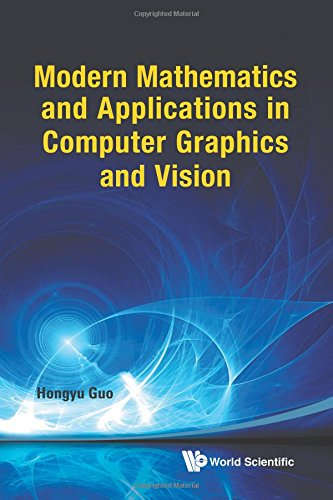| Modern Mathematics and Applications in Computer Graphics and Vision |
Author: Hongyu Guo Math is the foundation of computer graphics and vision so this book seems like something your should read. Computer graphics is a very math intensive area. When you first start learning about coordinates and transformations, perspective and other projections it all seems very complicated and sometimes you might find yourself thinking that it would be worth learning the more general theory behind it all. The key thing to notice about this book is that it is about "modern mathematics". This is generally taken to mean a fully axiomatic approach to the subject and indeed this is mostly what you get. From the start, the ideas are stated in terse symbolic form that are difficult to understand if you are not a reasonable mathematician. It also covers those areas of mathematics which are 20th century creations or at least topics which got their final polish in the 20th century. It is essentially a book on pure mathematics, but because of its aim to be applicable to computing it doesn't start at the beginning.
The first part is titled Algebra and it doesn't start where most introductions to algebra start. I have to admit that following the usual route of groups to rings, rings to fields, fields to vector spaces would be a long haul if what you really need is to know about vector spaces. This book starts off with linear algebra and skips the earlier structures. The problem with this is that you get the definition of a vector space as: ... a 4-tuple (V,F,+,.) where V is a non-empty set and F is a field.... The question is what is a field? The book doesn't define a field, nor does it really even give a clue as to what sort of thing it is. You either have to skip this and take it on trust or you have to know what a field is from previous study. The chapter covers standard linear algebra including transformations, dual spaces and so on but at the same abstract level. Chapter 2 moves on to tensor algebra - an extension of vector spaces. Then on to exterior algebra which can be thought of as an extension of the cross product to higher dimensional spaces. Chapter 4 is about geometric algebra, aka Clifford algebra, which is a tough subject but one that could one day prove very useful. The second part of the book is about Geometry, but not school geometry. It starts with projective geometry, which is roughly speaking more than you need to know about projections as used in graphics. Then on to differential geometry and non-Euclidean geometry which more or less has some use in graphic but only if you are pushing the envelope a lot.
Part III is Topology and More. I can't think of many direct uses for topology in either graphics or vision except at a very simple conceptual level. This part introduces point set topology, manifolds, Hilbert spaces and finally measure and probability. I'm glad that I know about these things but apart from understanding some edge cases they rarely figure in mainline graphics or vision. The fourth and final part of the book is about Applications - color spaces, perspective, quaternions and rotation, support vector machines and manifold learning in AI. Most of these applications can be understood, even mathematically, without the bare axiomatic treatment of the topics in the earlier chapters. You can mostly get by with an understanding of what happens in 3D space and just assume that similar things happen in higher dimensional spaces. That is, an intuitive approach usually suffices.
To repeat an earlier sentiment - I'm glad I know many of these topics and they do help me think about some special cases. For example, I'm not worried too much, well perhaps a little, by improper probability distributions and I'm glad I know what a Hilbert space is, but it really doesn't alter the way I think about support vector machines. There is an argument that the final section could be turned into a separate book leaving the pure math to its own, less read, volume. If you like abstract math and want a refresher course then this isn't a bad book. If you are a practicing graphics or AI programmer or researcher you might find this book tangential to what you want to do and what you need to know. I still enjoyed it. Related ReviewsThe Magic of Computer Graphics (CRC Press, 2011) Reviewed by Mike James
Fundamentals of Computer Graphics (A K Peters, 2009) Reviewed by: David Conrad
|
|||
| Last Updated ( Friday, 20 October 2017 ) |

